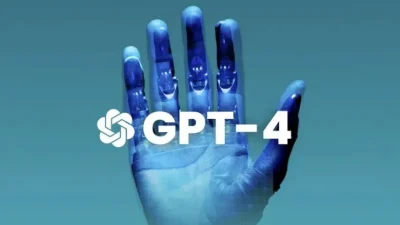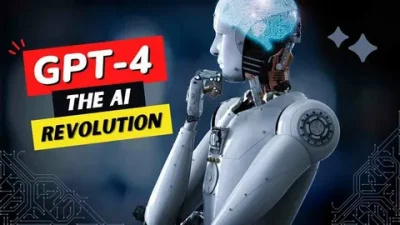Artificial intelligence has revolutionized many industries, and one of the most exciting applications is in creative projects. GPT-4, the latest iteration of OpenAI’s language models, has demonstrated an impressive ability to craft narratives, generate poetry, and ideate concepts for a variety of mediums. This article explores how GPT-4 is employed in literature, filmmaking, and advertising, showcasing its potential to assist and inspire creativity.
Applications in Literature
GPT-4 has proven to be a valuable tool for writers, offering assistance in brainstorming ideas, drafting prose, and even refining text. Its ability to process context and generate coherent, stylistically consistent content makes it a remarkable asset for literary endeavors.
Story Development
One of the most significant ways GPT-4 supports writers is by generating story ideas and developing plots. Authors can input a basic premise, and GPT-4 provides:
- Expanded storylines.
- Character backgrounds and motivations.
- Suggestions for settings and conflicts.
For example, a writer inputting “A young girl discovers she has magical powers” might receive a detailed outline of a coming-of-age fantasy tale, complete with character arcs and pivotal scenes.
Poetry Composition
The model’s flair for rhythm and wordplay has made it a go-to for poets. GPT-4 can craft verses in a range of styles, from classical sonnets to modern free verse. Writers often use it to overcome writer’s block or to experiment with unconventional formats.
Example:
Input: Write a sonnet about autumn.
Output: The amber leaves descend from lofty trees,
A whispered song, a serenade of fall.
The crisping air invokes a gentle tease,
As nature dons her fiery, fleeting shawl.
Collaborative Writing
GPT-4 is also an effective collaborator. Writers use it to test dialogue, refine descriptive passages, or experiment with alternative endings. Its responsiveness to stylistic cues allows for seamless integration into existing works.
Benefits of GPT-4 in Literature
| Feature | Application | Benefit |
|---|---|---|
| Story Generation | Plot and character development | Speeds up brainstorming |
| Poetry Writing | Composition of verses | Provides stylistic experimentation |
| Collaborative Editing | Refinement and suggestions | Enhances the quality of drafts |
Enhancing Filmmaking
The creative potential of GPT-4 extends into the world of cinema. Filmmakers use the model for scriptwriting, conceptualization, and even refining dialogue.
Scriptwriting
Scriptwriters can input a brief synopsis, and GPT-4 generates:
- Full-length scripts for films or episodes.
- Dialogue tailored to specific characters.
- Scene descriptions with vivid imagery.
For instance, a prompt like “Write a suspenseful opening scene in a haunted house” yields a detailed script, complete with atmospheric details and engaging dialogue.
Conceptual Design
In pre-production, GPT-4 helps filmmakers:
- Develop world-building elements for fantasy or sci-fi projects.
- Brainstorm ideas for visual motifs and thematic elements.
This capacity to provide comprehensive creative input streamlines the initial stages of filmmaking.
Refining Dialogue
Natural dialogue is a hallmark of great screenwriting. GPT-4’s contextual understanding ensures that conversations between characters feel organic and engaging. Filmmakers often use the model to refine awkward phrasing or to generate multiple versions of a key interaction.
GPT-4 in Filmmaking
| Application | Example Use | Benefit |
| Script Generation | Writing scenes | Saves time in drafting |
| Dialogue Refinement | Character conversations | Improves naturalism |
| World-Building | Sci-fi and fantasy concepts | Enhances immersion |
Revolutionizing Advertising
GPT-4 is transforming how brands engage with their audiences. From crafting compelling slogans to conceptualizing entire campaigns, its applications in advertising are diverse and impactful.
Generating Slogans
Creating a memorable slogan requires brevity and creativity, both of which GPT-4 excels at. Marketers provide keywords or themes, and the model generates numerous options tailored to the brand’s voice.
Example:
Input: Create slogans for an eco-friendly skincare brand.
Output:
- “Nature’s touch, your glow.”
- “Sustainable beauty, naturally.”
- “Glow green, inside and out.”
Campaign Ideation
Beyond slogans, GPT-4 assists in developing entire marketing strategies. By inputting target demographics and brand goals, marketers receive ideas for:
- Social media campaigns.
- Taglines and hashtags.
- Content strategies for diverse platforms.
Personalized Content
In digital marketing, personalized messaging is key. GPT-4 tailors messages for different audience segments, ensuring that communication feels relevant and authentic.
Advertising with GPT-4
| Feature | Application | Benefit |
| Slogan Creation | Crafting taglines | Delivers concise, impactful ideas |
| Campaign Development | Ideating strategies | Simplifies the creative process |
| Personalized Messaging | Segment-specific content | Enhances audience engagement |
Challenges and Considerations
Despite its many strengths, using GPT-4 for creative projects requires careful oversight. Key challenges include:
- Originality Concerns. As GPT-4 relies on patterns from existing data, outputs may lack true originality.
- Context Sensitivity. Overly specific or vague prompts can result in irrelevant content.
- Ethical Questions. The use of AI in creative industries raises questions about authorship and intellectual property.
To address these issues, creators should use GPT-4 as a tool to augment, not replace, human creativity.
Conclusion
GPT-4 has become a versatile ally in the realms of literature, filmmaking, and advertising. Its ability to generate ideas, refine content, and collaborate with creators opens up new possibilities for innovation. By leveraging its strengths while maintaining human oversight, artists and professionals can push the boundaries of their crafts.






